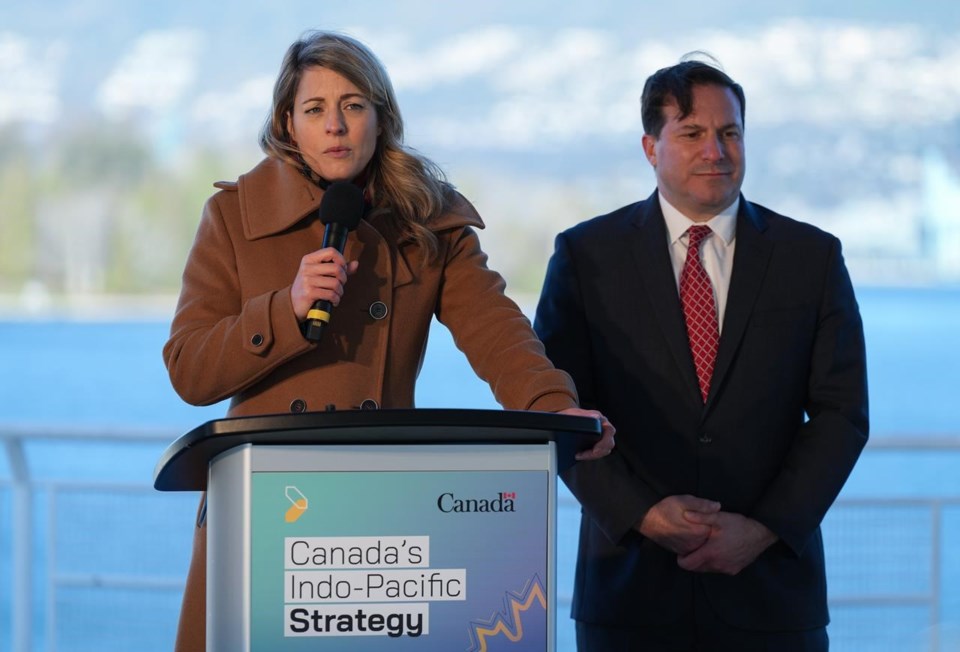TORONTO — Canada’s Indo-Pacific strategy is a good first step, but more details are needed on how the country can close gaps at home that could impede the strategy’s success, the Canadian Chamber of Commerce says.
Chamber CEO Perrin Beatty said while much of the strategy focuses on the countries in that region, more work needs to be done to improve transportation infrastructure in Canada to capitalize on increased trade with the Indo-Pacific area.
"At the present time, the three Fs are particularly important: food, fuel, and fertilizer,” he said Monday.
"There needs to be a conscious government policy that this is a priority at this time."
The comments came after the Liberal government unveiled an Indo-Pacific strategy on Sunday, announcing funding for a wide array of things including military spending, business grants and visa processing.
The plan promises $2.3 billion in funding to help Canada form closer ties with countries in the region, marking a move to diversify trading in the region amid concerns about China’s influence.
The federal government said it plans to expand funding for groups looking to pursue trade and investment opportunities in the area, launch a series of trade missions and negotiate trade and investment agreements with Indo-Pacific partners.
It also promised to establish a regional agricultural office to help Canadian agricultural exports, assist trading partners with improvements to labour provisions and expand natural resource ties.
The Business Council of Canada said Monday the country needs to do a better job of getting critical resources and energy to market in the Indo-Pacific region.
“This requires work at home by removing regulatory barriers, fast-tracking promising projects and investing in trade-enabling infrastructure such as ports, pipelines and rail,” said senior vice-president Robert Asselin in an emailed statement.
“Directionally, the government laid out a credible plan to expand Canada’s economic, diplomatic, humanitarian, and military presence in the Indo-Pacific,” said Asselin. “But successful execution of this strategy will require a whole-of-government approach that is focused and measurable.”
Beatty said a detailed strategy outlining specific steps to facilitate trade with the region is what's needed next.
He said the Indo-Pacific region is home to a diverse set of countries and negotiating with each of them will be easier said than done, especially in countries that differ significantly from Canada on issues like worker rights.
"We'll be needing much more specific information about individual markets, and also about the trade-offs."
Beatty said while the strategy is focused on investments in the region, it mentions little about attracting investment to Canada.
Examining and improving Canada’s ports, airports and railways needs to be a priority, he said.
"If there's one thing that stands out about the attempt to to increase capacity, it's how slow the process is," he said.
"What we need at this point is a government strategy of accelerating the process, of simplifying it, and ensuring that we don't get decisions being made by ... delay and default."
The government announced completion of its ports modernization review in October, promising legislative amendments to help make Canada’s ports more efficient and to attract investment.
— With files from Dylan Robertson in Ottawa
This report by The Canadian Press was first published Nov. 28, 2022.
Rosa Saba, The Canadian Press



